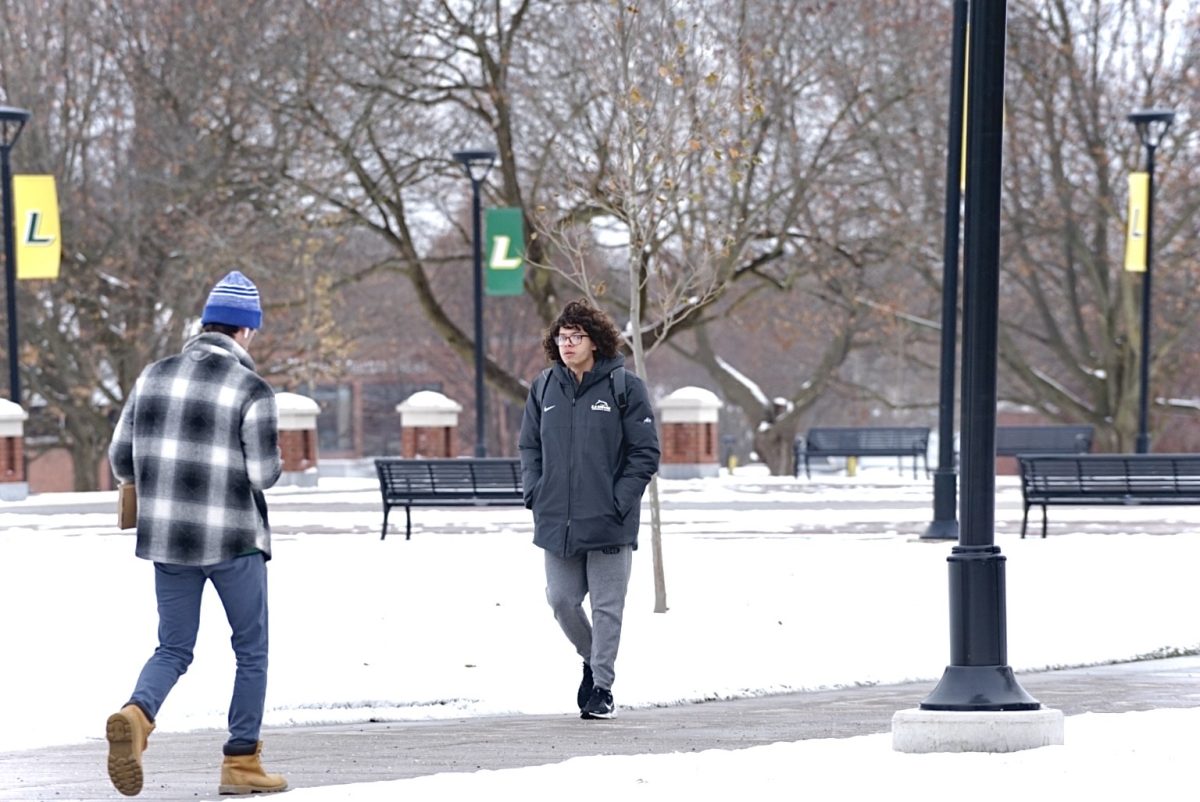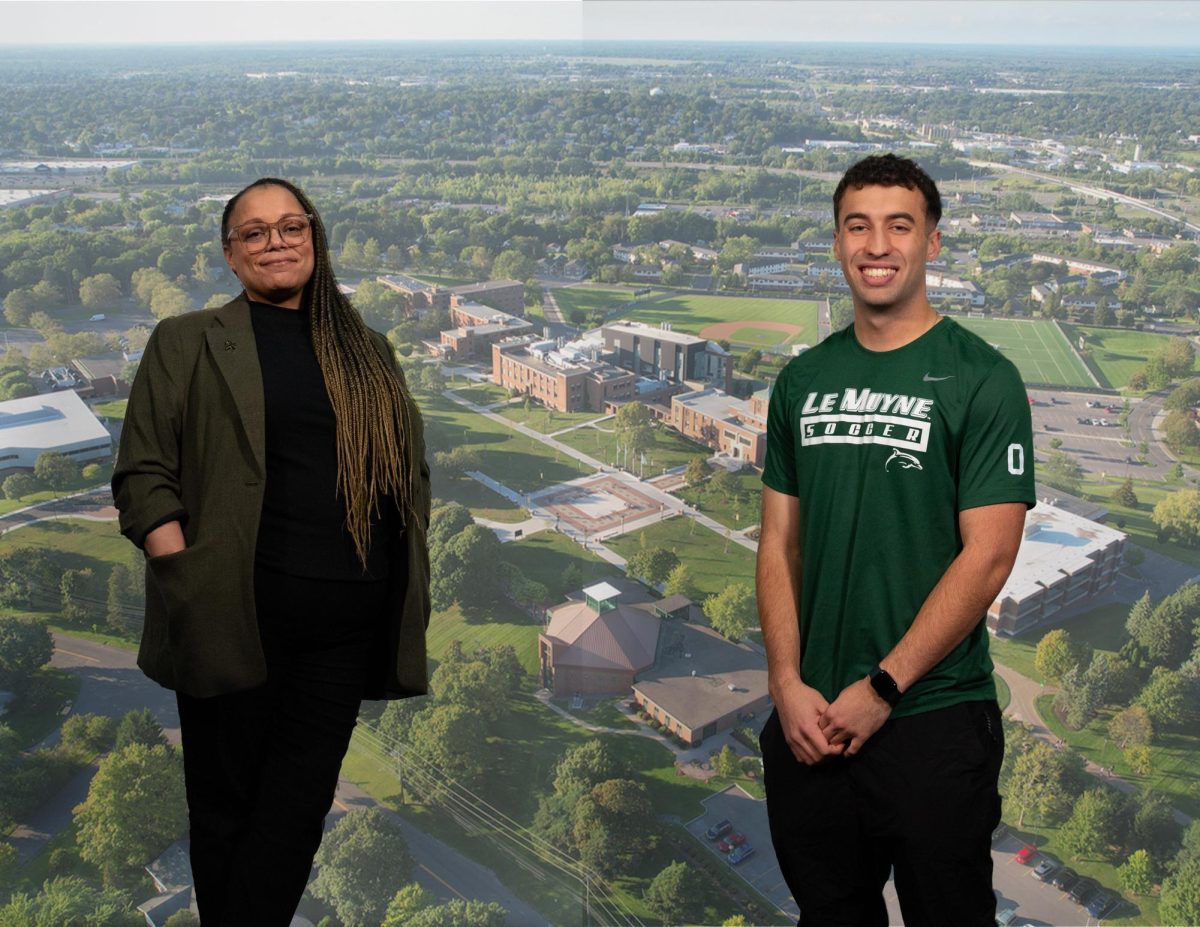Since arriving at Le Moyne College two years ago as the new director of athletics Bob Beretta has been focused on one of the biggest potential changes in the annals of Le Moyne College athletics:
Le Moyne College is shifting from Division II to Division I athletics, a move that proponents say will result in both more exciting competition and greater revenues.
A year ago, Beretta said, one big challenge was convincing prospective D-1 conferences that Syracuse, home community to Le Moyne, was not what Beretta called “a dying city.”
That was before Micron – a computer chip titan – announced that it will make the single largest private investment in American history in Central New York at an industrial park in Clay, a 20-minute drive from campus.
“’Blow my mind’ is a really apt way to describe this,” said David Voorhees, chair and founder of the computer science department at Le Moyne College.
Micron promises to invest $100 billion in greater Syracuse, and with that comes new opportunities, businesses, and potentially hundreds of thousands new people in the region. The company has promised that it will bring in 6,000 direct jobs paying an average of $100,000 a year, and hopes to bring in thousands more.
If it happens, it will have a profound and immediate impact on Le Moyne:
“This positions Le Moyne to grow,” said Tim Lee, the school’s vice-president of enrollment, who said that dozens of small colleges across Upstate New York could close in the coming years because of quickly decreasing enrollment.
With 85 percent of Le Moyne students coming from within New York, “it’s going to attract people to Upstate New York who have never lived in Upstate New York,” Lee said of Micron.
In other words, this could insulate Le Moyne against a destructive trend of plummeting enrollment sweeping through American higher education – as exemplified by the closing of Cazenovia College.
For Beretta, who came to Le Moyne from a high-profile position at West Point, Micron could shatter walls that have prevented the school from expanding and creating the facilities that would increase enrollment and allow it to compete on a D-1 level for the first time in its history.
One particular dream: Beretta foresees the possibility of creating a $40 million fieldhouse for he whole Le Moyne community that would, in his vision, carry the name of a particular lead sponsor.
Micron.
There is hope of joint certificate programs between Rochester Institute of Technology (RIT) and Le Moyne, said William Brower, one of Le Moyne’s top administrators and a special assistant to the president for strategic partnerships and workforce innovation.
These joint certificate programs would include both Le Moyne and RIT as the colleges on the certificate and be taught by staff from both colleges
To put the scope of the Micron project into perspective, Brower described that the clean rooms – just where the chips would be constructed in Clay – would be over 40 football fields large. To put it in terms Le Moyne students would understand, he used 40 Le Moyne lacrosse fields as an example.
Brower continued by stating that with the movement of Micron into Syracuse, there would be a great possibility that the college would grow in size. Part of that growth, he foresees, could be into new programs at the college. Brower cited specifically the possibility of a 2+2 program with jobs that would lead to Micron employment. This would be similar to other “pipeline” programs, he said, citing the nursing program.
Brower, overall, thinks that the partnership between Micron and the college could be very strong. He stated that Micron aligns with the college’s Jesuit values, as they have a commitment to diversity, equity and inclusion. The potential impact, he said, is of such generational impact in neighborhoods of struggle – a challenge targeted by Le Moyne’s Erie 21 program that Brower helped create – that Brower changed his mind about potentially leaving Le Moyne and instead is staying here.
While some are still skeptical about the possibility of Micron moving into town, Brower said he remains optimistic about the move and the positive impact that it could have on the Le Moyne community.
As for Le Moyne students, what do they think about Micron and the opportunities it will bring to the community? An informal survey of some Le Moyne students conducted by a team of aspiring journalism students revealed that most students surveyed attending Le Moyne College remained unsure of what Micron really was.
One student, Riley Stuver, a business major, expressed confusion when asked if she knew what Micron was, stating: “I’ve never heard of Micron before, but it sounds like it is for the greater good of the Syracuse community.”
However, another student, William Hatty, a computer science major, praised Micron and what it will do for the community. “Lots of companies and people will be attracted.” Hatty also said, “Micron will shape the economic future of Syracuse.”
While Hatty had assumed he would be leaving Syracuse after graduation, he now says there is potential he could stay if Micron provides jobs in his specialty.
Voorhees, the first full-time computer science professor Le Moyne ever had, is retiring after teaching for more than 20 years. Asked how he feels about Micron coming to Syracuse just as he leaves the position, he said, it’s great for the future of Syracuse but he is still ready to retire.
Yet he also said it is almost impossible to comprehend what could be coming, for Le Moyne and the community.
“Companies come and go,” Voorhees said. “I think Micron will stay and it will be huge.”
Students working on this piece included Aidan Clark, Abby Files, Ryan Hill, Darrick Jones, Jonathan Marks, Stephen Moore, Nicholas Nevins, Liam O’Connor, Daniella Padinha, Barbadu Raccha, Taylor Reich, Stephen Riale, William Thomson and Sammara Tigner.
Micron: The Tech Giant That Could Change Le Moyne As We Know It
Newswriting and Reporting class, Spring 2023, Guest Writer
August 30, 2023
More to Discover





